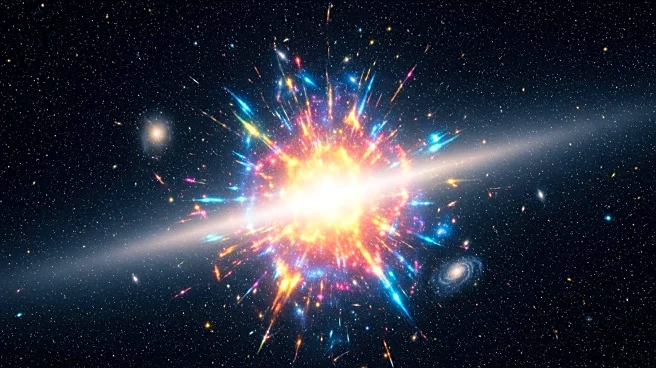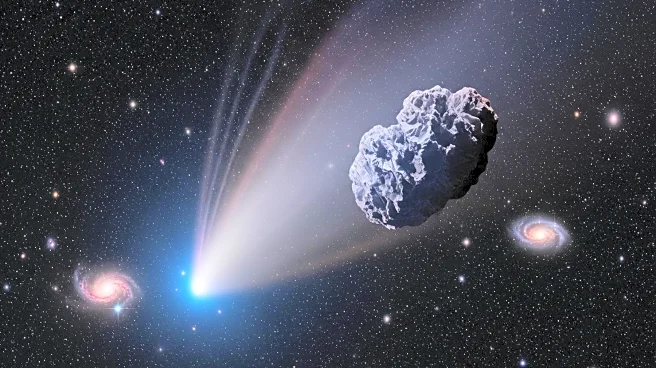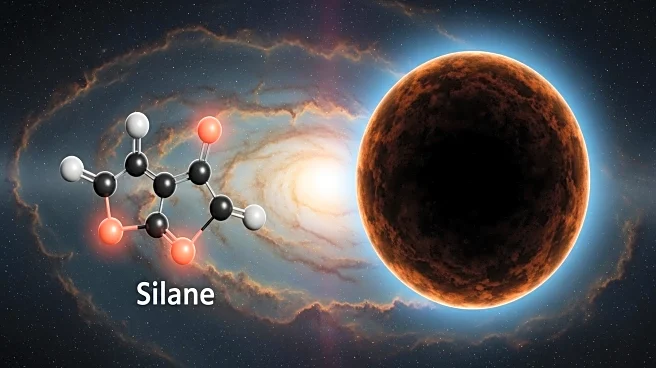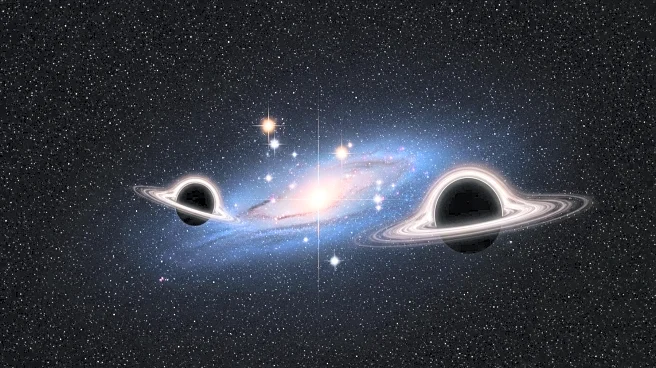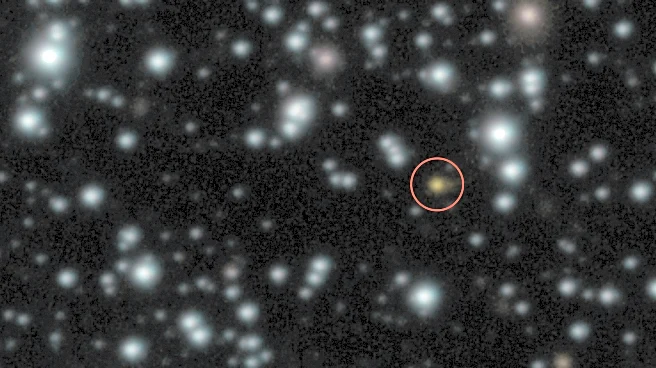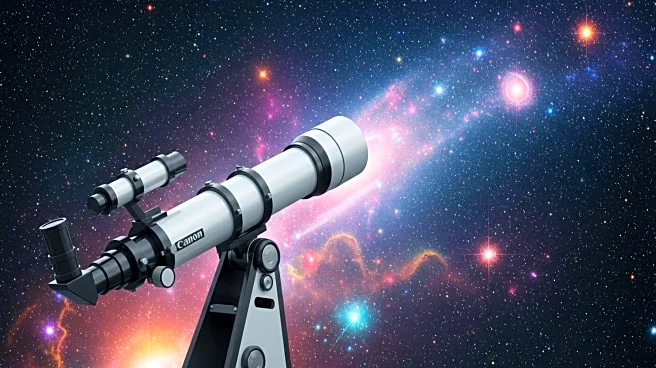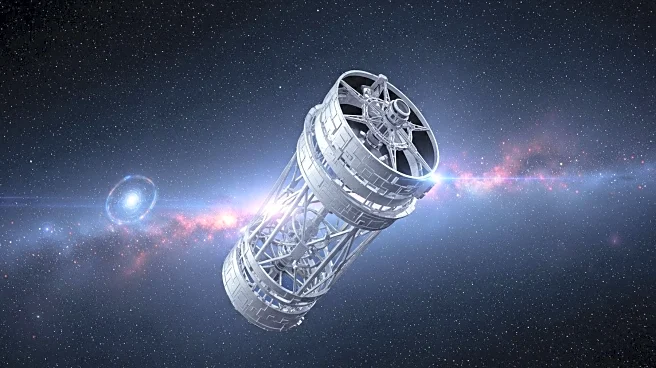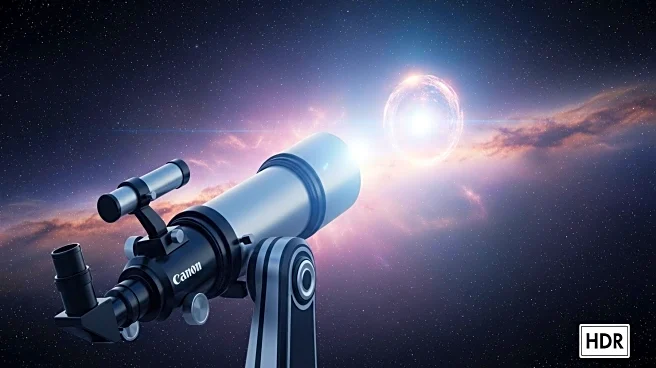What's Happening?
Astronomers have identified a unique gamma-ray burst (GRB) designated GRB 250702B, which exploded multiple times in one day, a phenomenon never observed before. Initially detected by NASA's Fermi Gamma-ray Space Telescope, the burst's location was confirmed outside the Milky Way by the Very Large Telescope and Hubble Space Telescope. This GRB challenges existing theories, as gamma-ray bursts typically result from the catastrophic deaths of massive stars and do not repeat.
Why It's Important?
The discovery of GRB 250702B could redefine our understanding of gamma-ray bursts and the processes leading to such cosmic explosions. This event suggests the possibility of unknown mechanisms at play, potentially involving unusual star collapses or interactions with black holes. Understanding these bursts is crucial for astrophysics, as they represent the most energetic explosions in the universe, providing insights into stellar evolution and cosmic phenomena.
What's Next?
Further investigation is required to pinpoint the exact location and cause of GRB 250702B. Astronomers are monitoring the site with advanced telescopes, including the James Webb Space Telescope, to observe the aftermath and gather more data. This research may lead to new models explaining long-lasting and repeating gamma-ray bursts, expanding our knowledge of cosmic events.
